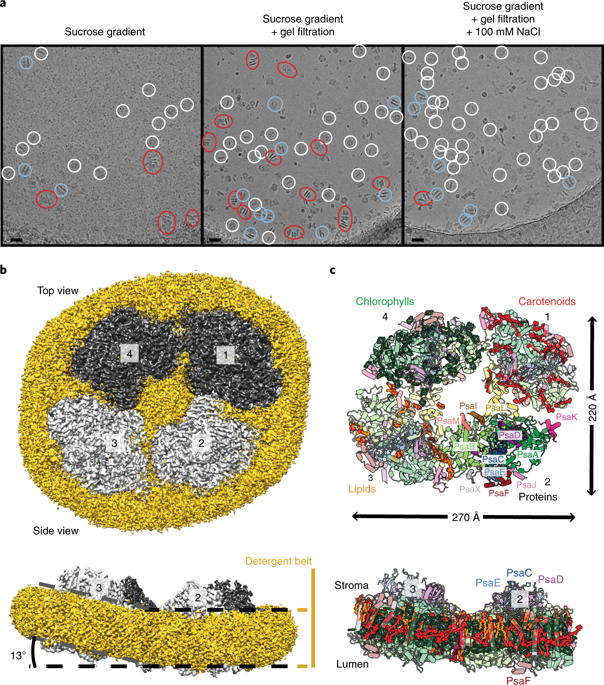Nature Plants ( IF 15.8 ) Pub Date : 2020-03-09 , DOI: 10.1038/s41477-020-0610-x Ming Chen 1 , Annemarie Perez-Boerema 2, 3 , Laixing Zhang 4 , Yanxue Li 1 , Maojun Yang 4 , Shizhong Li 1 , Alexey Amunts 2, 3

|
Photosystem I (PSI) is able to form different oligomeric states across various species. To reveal the structural basis for PSI dimerization and tetramerization, we structurally investigated PSI from the cyanobacterium Anabaena. This revealed a disrupted trimerization domain due to lack of the terminal residues of PsaL in the lumen, which resulted in PSI dimers with loose connections between monomers and weaker energy-coupled chlorophylls than in the trimer. At the dimer surface, specific phospholipids, cofactors and interactions in combination facilitated recruitment of another dimer to form a tetramer. Taken together, the relaxed luminal connections and lipid specificity at the dimer interface account for membrane curvature. PSI tetramer assembly appears to increase the surface area of the thylakoid membrane, which would contribute to PSI crowding.
中文翻译:

光系统 I 和脂质环境的独特结构调制稳定了其四聚体组装
光系统 I (PSI) 能够在各种物种中形成不同的寡聚状态。为了揭示 PSI 二聚和四聚的结构基础,我们在结构上研究了来自鱼腥藻蓝藻的 PSI. 这揭示了由于管腔中缺少 PsaL 的末端残基而导致的三聚化结构域被破坏,这导致 PSI 二聚体在单体之间的连接松散,并且与三聚体相比能量耦合叶绿素更弱。在二聚体表面,特定的磷脂、辅因子和相互作用共同促进了另一个二聚体的募集形成四聚体。总之,二聚体界面处松弛的管腔连接和脂质特异性解释了膜曲率。PSI 四聚体组装似乎增加了类囊体膜的表面积,这将导致 PSI 拥挤。











































 京公网安备 11010802027423号
京公网安备 11010802027423号